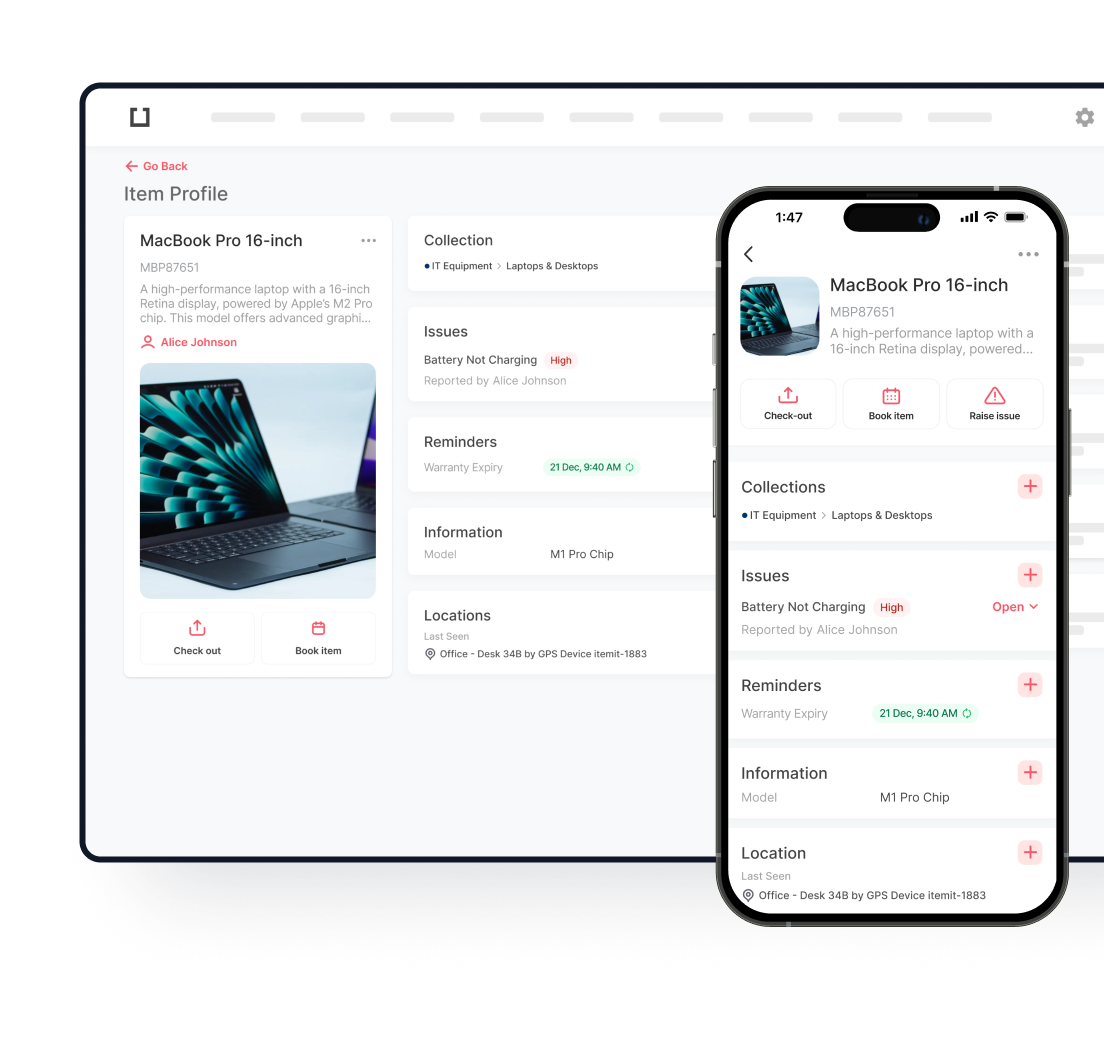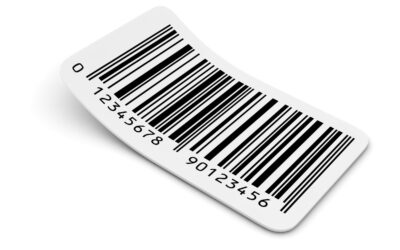
Organisations juggling dozens or thousands of assets face a common challenge: maximising value while controlling costs throughout each asset’s useful life. From vehicles and IT equipment to machinery and buildings, keeping tabs on assets from purchase to disposal requires systematic approaches rather than ad-hoc solutions.
Asset Lifecycle Management (ALM) offers the framework that businesses need to track, maintain, and optimise their investments. This guide unpacks the essentials of ALM, practical implementation strategies, and how tools like itemit’s asset-tracking solution can transform your operations.
What is Asset Lifecycle Management?
Asset Lifecycle Management (ALM) encompasses the coordinated activities needed to manage assets optimally from initial planning through to eventual disposal. More than simple inventory control, the ALM definition covers performance optimisation, cost management, and value maximisation at every step of an asset’s existence.
When we define ALM, we’re talking about a strategic system that helps organisations:
- Monitor assets throughout their useful life
- Extract maximum performance and value
- Reduce total ownership costs
- Base asset decisions on solid data
- Meet regulatory obligations
- Forecast and plan for asset needs
At its core, each ALM asset strategy recognises that assets require different approaches as they move through various lifecycle phases – what works for new equipment rarely suits ageing assets nearing replacement.
The Complete Asset Lifecycle: Stages Explained
The asset life cycle stages follow a natural progression, though terminology might differ across industries. Most asset lifecycle frameworks include these six key phases:
1. Planning and Needs Assessment
Before acquisition comes thoughtful planning:
- Identifying operational requirements
- Analysing cost versus benefit
- Creating detailed specifications
- Setting budgets and funding sources
- Researching potential suppliers
2. Procurement and Acquisition
With plans established, procurement follows:
- Selecting vendors and negotiating terms
- Deciding between purchase, lease or rental
- Managing contracts and documentation
- Checking received assets against specifications
- Accepting and registering new assets
3. Deployment and Implementation
Getting assets into service requires:
- Applying asset tags or implementing RFID asset tracking
- Setting up and configuring equipment
- Training users on proper operation
- Creating baseline documentation
- Recording warranty details
4. Operation and Utilisation
During everyday use, focus shifts to:
- Tracking usage patterns
- Monitoring performance metrics
- Supporting users
- Ensuring regulatory compliance
- Optimising how assets are used
5. Maintenance and Support
Throughout operational life, maintenance becomes crucial:
- Scheduling preventive care
- Managing repairs efficiently
- Processing warranty claims
- Tracking performance trends
- Implementing updates or upgrades
6. Renewal or Disposal
When assets reach end-of-life, organisations must:
- Plan retirement timing
- Secure data removal (for digital assets)
- Follow proper decommissioning steps
- Dispose of it responsibly or recycle it.
- Plan replacement strategies
These phases form the asset lifecycle management process, creating a continuous improvement loop where each cycle informs better decisions in subsequent rounds.
Types of Assets in Lifecycle Management
Asset lifecycle management strategies vary significantly based on what you’re managing:
Physical Assets and Equipment
Machinery, vehicles, tools and other tangible items follow traditional lifecycle patterns with a heavy emphasis on mechanical condition and maintenance. The equipment life cycle typically prioritises operational reliability and preventive care to maximise useful life.
IT Assets and Hardware
The IT asset lifecycle brings unique challenges around security vulnerabilities, compatibility requirements, and rapid technology changes. These assets generally have compressed lifecycles requiring more frequent replacement than physical equipment.

Digital Assets and Software
The digital asset lifecycle covers software, databases, digital content, and intellectual property. Management priorities include license tracking, version control, security updates, and compliance verification. A typical software asset management lifecycle diagram shows connections between acquisition, deployment, compliance monitoring and value optimisation.
Infrastructure Assets
Infrastructure lifecycle management addresses long-term physical assets like buildings, utility systems, and communication networks. These assets often have extended lifecycles spanning decades rather than years, with substantial maintenance requirements.
Property Assets
The property management lifecycle focuses on real estate from acquisition through development, occupancy, maintenance and eventual disposition. These assets involve complex financial considerations, tenant relationships, and regulatory requirements.
Implementing Effective Asset Lifecycle Management
Creating a practical asset lifecycle management plan requires blending processes, technology and organisational commitment.
Creating an ALM Plan
Your plan should include:
- Documented procedures for each lifecycle stage
- Clear ownership and responsibilities
- Standardised processes
- Measurable performance indicators
- Integration points with other business systems
Many organisations develop specific documentation like an IT asset lifecycle management policy to govern technology assets with special security or compliance needs.
Asset Tracking Fundamentals
Effective tracking forms the backbone of ALM. A good asset tracking solution delivers:
- Current location data
- Usage history and patterns
- Maintenance records
- Compliance documentation
- Performance insights
RFID Asset Tracking Solutions
RFID asset tracking offers compelling advantages for physical asset management:
- Durable tags attached to assets
- Automatic detection as assets move
- No visual scanning required
- Rapid inventory capabilities
- Seamless software integration
Integrating Physical and Digital Tracking
Modern asset lifecycle management demands unified approaches:
- Single source of truth for all assets
- Connected tracking systems
- Consistent processes across asset types
- Consolidated reporting
- Complete organisational visibility
itemit's Comprehensive Tracking Approach
The itemit asset tracking solution addresses the entire asset lifecycle with:
- Multiple tagging options including RFID, QR and barcodes
- Cloud-based asset register
- Mobile access for field teams
- Automated maintenance scheduling
- Customisable reporting
- Scalability from small teams to enterprise needs

The Business Impact of Effective ALM
Well-implemented asset lifecycle management delivers measurable benefits:
Cost Optimisation and ROI
- Lower lifetime ownership costs
- Longer useful asset life
- Smarter procurement decisions
- Fewer emergency repairs
- More accurate financial planning
Risk Reduction and Compliance
- Simplified regulatory adherence
- Enhanced security protocols
- Reduced operational disruptions
- Better warranty utilisation
- Proper environmental compliance
Operational Efficiency Improvements
- Less time wasted locating assets
- Streamlined maintenance workflows
- Higher utilisation rates
- Reduced administrative overhead
- Optimised resource allocation
Strategic Decision Support
- Evidence-based replacement planning
- Clear performance visibility
- Accurate needs forecasting
- Improved capital planning
- Performance benchmarking
Industry-Specific ALM Applications
While core principles remain consistent, asset lifecycle management implementation varies significantly across sectors, with each industry facing unique challenges and requirements:
Manufacturing Equipment Lifecycle
Manufacturing operations live or die by equipment reliability. The equipment life cycle in this sector demands:
- Rigorous uptime monitoring with KPIs like Overall Equipment Effectiveness (OEE)
- Tiered maintenance protocols from basic inspections to complete overhauls
- Integration with production scheduling to minimise disruption
- Vibration analysis and oil testing for early problem detection
- Complete documentation for regulatory compliance (ISO 9001, etc.)
- Energy efficiency monitoring and improvement
Asset failures in manufacturing directly impact production targets, making predictive maintenance critical. Leading manufacturers now use real-time condition monitoring to detect subtle changes in equipment performance before failures occur.
IT Infrastructure Lifecycle Management
Infrastructure lifecycle management for technology requires balancing performance, security, and cost considerations:
- Strict provisioning and decommissioning protocols to prevent shadow IT
- Patch management and vulnerability tracking
- Capacity planning to prevent bottlenecks
- Hardware refresh cycles aligned with warranty periods
- Software license compliance monitoring
- Data centre power and cooling optimisation
- Disaster recovery planning and testing
- Detailed change management processes
With cloud migration increasingly common, many organisations now manage hybrid environments with both physical and virtual infrastructure components, adding complexity to lifecycle management.
Property and Facilities Management
Property management lifecycle approaches must balance short-term operational needs with long-term asset preservation:
- Building Information Modelling (BIM) integration for new properties
- Preventive maintenance scheduling for critical systems
- Space utilisation monitoring and optimisation
- Energy efficiency tracking and improvement
- Tenant/occupant satisfaction metrics
- Regulatory compliance across multiple jurisdictions
- Capital improvement planning with ROI analysis
- End-of-life planning for building systems
Modern property management increasingly incorporates smart building technologies that provide real-time data on system performance, occupancy patterns, and energy usage.
Healthcare Equipment Management
Healthcare organisations face some of the most demanding ALM requirements:
- Strict compliance with regulatory standards (FDA, MHRA, etc.)
- Patient safety protocols requiring documented maintenance
- Calibration verification and documentation
- Infection control procedures for equipment
- Integration with electronic health records
- Mobile equipment tracking across departments
- Biomedical engineering support resources
- Technology evaluation for new acquisitions
The critical nature of medical equipment means healthcare organisations must maintain meticulous records of all maintenance activities, testing procedures, and performance metrics.
Transportation and Fleet Management
Fleet operators implement specialised lifecycle approaches for their mobile assets:
- Telematics integration for real-time vehicle monitoring
- Fuel efficiency tracking and driver behaviour analysis
- Predictive maintenance based on actual usage rather than schedules
- Regulatory compliance (MOT, tachograph, etc.)
- Route optimisation to reduce wear and tear
- End-of-life remarketing or disposal strategies
- Total cost of ownership calculations by vehicle
Modern fleet management solutions now incorporate real-time location tracking with RFID asset tracking or GPS technology, allowing organisations to optimise both asset utilisation and maintenance scheduling.
Education Sector Applications
Educational institutions manage diverse asset portfolios with unique challenges:
- IT equipment tracking across multiple buildings or campuses
- Classroom technology lifecycle management
- Laboratory equipment maintenance and calibration
- Asset sharing across departments or faculties
- Specialised tracking for library materials
- Seasonal usage patterns affecting maintenance scheduling
- Grant-funded equipment compliance requirements
With limited budgets, educational institutions particularly benefit from lifecycle approaches that extend asset lifespans while maintaining performance and reliability.

Future Trends in Asset Lifecycle Management
The asset lifecycle management field continues evolving with new technologies:
IoT Integration in ALM
Internet of Things sensors deliver real-time condition monitoring, usage tracking, and predictive insights that enhance traditional asset tracking solutions.
AI and Predictive Maintenance
Machine learning algorithms increasingly predict failures before they happen, optimising maintenance timing and reducing costly downtime.
Advanced Asset Tracking Technologies
Growing environmental focus drives new approaches to asset procurement, utilisation patterns, and responsible end-of-life management.
Beyond conventional RFID asset tracking, newer technologies like Bluetooth Low Energy, GPS, and ultra-wideband tracking enable more precise asset location and movement monitoring.
Sustainability in the Asset Lifecycle
Getting Started with Asset Lifecycle Management
Implementing sound asset lifecycle management requires careful planning and execution. Here’s a comprehensive roadmap to guide your organisation through the process:
1. Conduct a Thorough Asset Inventory
Begin with a complete accounting of what you already have:
- Document all existing assets by type, location, and department
- Gather available historical data (purchase dates, costs, maintenance records)
- Identify information gaps that need addressing
- Establish asset categorisation criteria (critical vs. non-critical, high-value vs. low-value)
- Consider using mobile inventory tools with asset tags for initial data capture.
- Create a standardised naming convention for asset records
This initial inventory provides your baseline measurement and often reveals immediate improvement opportunities.
2. Prioritise Critical Assets for Immediate Attention
Not all assets require the same level of management:
- Identify assets directly impacting business operations or safety
- Flag assets with compliance or regulatory requirements
- Assess assets nearing end-of-life or requiring immediate maintenance
- Evaluate assets with high replacement costs or long lead times
- Look for assets with documented reliability issues or frequent failures
- Prioritise assets with high operational or maintenance costs
By focusing initially on critical assets, you can demonstrate quick wins while developing broader management processes.
3. Select and Implement Appropriate Tracking Technologies
Choose tracking methods based on your specific needs:
- Barcode labels for basic, cost-effective identification
- QR codes for easy scanning with standard mobile devices
- RFID asset tracking for automated, bulk scanning capabilities
- GPS trackers for high-value mobile assets
- BLE (Bluetooth Low Energy) for indoor location tracking
- Consider durability requirements based on asset environments
- Evaluate connectivity needs for real-time vs. periodic tracking
The right tracking technology depends on asset value, mobility, environment, and how frequently location data needs updating.
4. Develop Standardised Lifecycle Processes
Document clear procedures for each lifecycle stage:
- Create acquisition request and approval workflows
- Establish receiving and commissioning procedures
- Define deployment and installation standards
- Document routine inspection and maintenance schedules
- Develop incident response procedures
- Create end-of-life evaluation criteria
- Document proper disposal or decommissioning procedures
- Build continuous improvement feedback loops
These processes should align with your existing business operations while addressing gaps in current asset management practices.
5. Select and Deploy an Asset Tracking Solution
Choose technology that supports your process requirements:
- Evaluate cloud-based vs. on-premises solutions
- Consider mobile accessibility requirements
- Assess integration capabilities with existing systems
- Evaluate reporting and analytics features
- Check scalability for future growth
- Assess security and access control capabilities
- Evaluate the total cost of ownership, not just purchase price
- Consider implementation timeframes and resource requirements
The itemit asset tracking solution offers flexible deployment options with both mobile and desktop access, making it suitable for organisations at various stages of ALM maturity.
6. Implement Changes Incrementally
Avoid overwhelming your organisation with massive changes:
- Start with a pilot programme in one department or asset category
- Test processes and technology in a controlled environment
- Document lessons learned and revise approaches
- Develop internal champions who understand the benefits
- Create success metrics to measure improvements
- Expand gradually to additional asset categories or departments
- Celebrate and communicate early successes
Incremental implementation allows for course corrections with minimal disruption.
7. Train Your Team Thoroughly
Ensure proper adoption through comprehensive training:
- Develop role-specific training materials
- Provide hands-on practice with new systems
- Create quick reference guides for common tasks
- Establish a support mechanism for questions
- Consider training “super users” who can assist colleagues
- Create video tutorials for visual learners
- Schedule refresher training at regular intervals
Remember that ALM is as much about people and behaviour change as it is about processes and technology.
8. Monitor Results and Continuously Improve
Establish feedback mechanisms to refine your approach:
- Set baseline measurements before implementation
- Track key performance indicators aligned with business goals
- Schedule regular review meetings to assess progress
- Soliciting user feedback on system usability
- Identify bottlenecks or process inefficiencies
- Document cost savings and operational improvements
- Revise processes based on real-world experience
- Stay current with emerging best practices
The most effective asset lifecycle management programmes evolve continuously based on measured results and changing business needs.
From Asset Management to Business Advantage
Effective asset lifecycle management has moved beyond optional – it’s now fundamental for organisations seeking efficiency and competitive advantage. From initial planning to eventual disposal, comprehensive asset oversight delivers tangible benefits through cost control, risk reduction, and performance enhancement.
With the right mix of processes, technology tools, and organisational practices, asset management transforms from administrative burden to strategic advantage.
The itemit asset tracking solution provides the capabilities businesses need to implement robust asset lifecycle management, with flexible options suitable for organisations across industries and sizes. For a personalised demonstration of how itemit can transform your asset management approach, contact our team today.

Try itemit
Choose a better way to track
your assets.
Start your free 14-day trial now!

Keep Learning
itemit Blog
Tips, guides, industry best practices, and news.
What Is Active RFID? A Complete Guide to Smart RFID Tags
Discover what Active RFID is, how active tags function, and the key benefits and use cases that make this technology essential for modern tracking systems.
Everything You Need to Know About 2D Barcodes
Discover everything about 2D barcodes, including how they work, their benefits, and how they are revolutionizing industries and improving business operations
Benefits of Vendor Managed Inventory for Your Business
Learn how Vendor Managed Inventory (VMI) can streamline your supply chain. Explore the key benefits and how it helps optimize inventory management.



